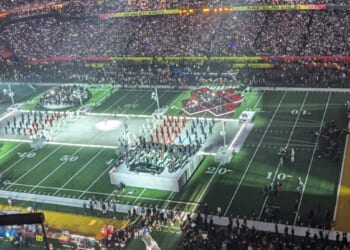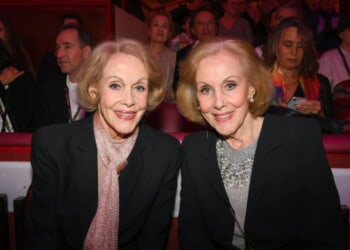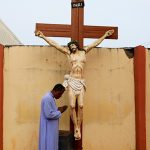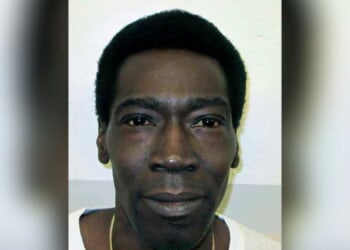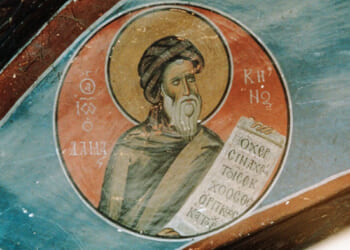
Editor’s note: The following address was delivered to the Theology Department of the University of Dallas on November 5, 2025, and is posted here in two parts.
When thinking of John Henry Newman, one’s thoughts normally connect him to the Oxford Movement, and rightly so. Further, when thinking of the Oxford Movement, one’s thoughts normally go to High Church liturgy, thus equating Newman with “bells and smells.”
However, that equation would be incorrect, as Father Michael Uwe Lang demonstrates quite handily.1 That does not mean that Newman was not interested in the liturgy; indeed, he was intensely interested, but his focus was much sharper, calling all to go deeper into that reality. He was concerned to highlight the need for a profound appreciation for reverence, tradition, and popular sensibilities–all themes he developed as an Anglican.2 It would not be out of order to suggest that the liturgical reformers within the Catholic Church after 1965 would have profited greatly by taking Newman as a guide, and so treading more softly in their program.
Newman’s personal evolution
The “personal” is always close at hand in evaluating Newman’s positions, and that is surely the case for our present considerations.
It might be cause for amazement to learn that Newman made his First Holy Communion at the age of sixteen during his first semester at Oxford. However, that should come as no surprise when one recalls that he grew up in the evangelical wing of Anglicanism, which was distinctly ‘unsacramental.” Equally unsurprising is that he refers to the event as receiving “the Bread.” A mere two years later, however, he notes how scandalized he was by the cavalier and even sacrilegious approach of his fellow students in their reception of the Eucharist. That growth in what we could call “Eucharistic appreciation” would develop into a most robust appreciation of the Sacrament, a full fifteen years before his entrance into full communion with the Catholic Church, thanks largely to the influence of his bosom friend Richard Hurrell Froude.3
Unlike many of the Oxford Movement leaders, as an Anglican clergyman, Newman is never found wearing Eucharistic vestments, contenting himself with a surplice and preaching stole; nor does he celebrate the Eucharist ad orientem, maintaining the rather odd “northward” position of the mainstream. Although he does not offer a rationale for his practices, one can suppose that he did not want to get identified with what not a few Anglican divines deemed liturgical foppery; he wanted to concentrate on the essentials, first and foremost. He would have delighted to endorse the mindset of Romano Guardini, a century later, in The Spirit of the Liturgy, with a heavy stress on “spirit.”
Newman’s observation and experience of worship in the Anglican community fixed in his mind (and heart) certain key points of reference, to which we shall now turn our attention.
Reverence
For Newman, reverence is the absolute still-point in any discussion of worship, with whole sermons devoted to the topic but also surfacing as frequent obiter dicta throughout his corpus. Therefore, we must adopt his laser-like focus on this foundational element. It should be noted that all of his sermons on reverence were delivered as an Anglican. It is significant that before penning and preaching many of his sermons, he felt compelled to address the matter in a poem, composed off the coast of Monte Pelegrino on 14 June 1833, entitled precisely, “Reverence”:
I bow at Jesu’s name, for ’tis the Sign
Of awful mercy towards a guilty line.
Of shameful ancestry, in birth defiled,
And upwards from a child
Full of unlovely thoughts and rebel aims
And scorn of judgment-flames,
How without fear can I behold my Life,
The Just assailing sin, and death-stain’d in the
strife?And so, albeit His woe is our release,
Thought of that woe aye dims our earthly peace;
The Life is hidden in a Fount of Blood!
And this is tidings good
For souls, who, pierced that they have caused
that woe,
Are fain to share it too:
But for the many, clinging to their lot
Of worldly ease and sloth, ’tis written “Touch Me
not.”
Three years later, Newman would preach on “Reverence in Worship,”4 anticipating by nearly 125 years insights made famous and popular by Mircea Eliade in The Sacred and the Profane. He begins his discourse with a delightful recounting of the introduction of the young boy Samuel to life in the Temple of Jerusalem (1 Sam 2), asserting that by daily contact with the sacred, the child grew in “his awe and holy fear,” which “reminds us of the decency and gravity necessary at all times, and in all persons, in approaching Him [the Almighty].” He observes that even pagan religions have a connatural sense of the sacred:
To believe and not to revere, to worship familiarly and at one’s ease, is an anomaly and a prodigy unknown even to false religions, to say nothing of the true one. . . . . Worship, forms of worship — such as bowing the knee, taking off the shoes, keeping silence, a prescribed dress and the like — are considered as necessary for a due approach to God.
He then castigates his contemporaries who have “in this respect fallen into greater than pagan error,” for “they have considered awe to be superstition, and reverence to be slavery.” He grounds his position in an interesting way, holding up as an example for humans the worship of the angels:
I mean when a man acts in all respects as if he was at home, and not in God’s House,—all I can say is, that he ventures to do in God’s presence what neither Cherubim nor Seraphim venture to do, for they veil their faces, and, as if not daring to address God, praise Him to each other, in few words, and those continually repeated, saying, Holy, holy, holy, Lord God of Sabaoth.
Two years later, he would develop this theme in “Reverence, a Belief in God’s Presence.”5 Here, he analyzes the attitudes and behavior of those “who are deficient in awe and fear,” commenting that such persons “make up the religious portion of the community.”
The Oxford vicar takes direct aim at the two most damaging tendencies he sees in otherwise “observant” Christians. The first are those who, instead of measuring themselves according to the measure of Christ, evaluate their behavior in the light of major sinners, thus enabling them to conclude that “I am nowhere near as bad as they.” The second subscribe to the theological theory of “once saved, always saved,” thus clearly ignoring the Pauline injunction: “Therefore let any one who thinks that he stands take heed lest he fall” (1 Cor 10:12). That problem of Newman’s age only grew worse with the passage of time, so that Pope Pius XII in a radio address to the U.S. National Catechetical Congress in Boston on 26 October 1946, could declare that “the sin of the century is the loss of the sense of sin.”
The failure to acknowledge oneself as a sinner, says Newman, is part of a much bigger problem, namely, a failure to cultivate the virtue of fear of the Lord. It is critical to underscore that the fear he is advocating is not “slavish dread”; he is advocating “godly awe and reverence.” He charges that “the religion of the day is destitute of fear.” As evidence of that charge, he cites the following behaviors:
And another instance is irreverence in church, sitting instead of kneeling in prayer, or pretending to kneel but really sitting, or lounging or indulging in other unseemly attitudes; and, much more, looking about when prayers are going on, and observing what others are doing.
He presses the case thus:
Many other instances might be mentioned of very various kinds. For instance, the freedom with which men propose to alter God’s ordinances, to suit their own convenience, or to meet the age; their reliance on their private and antecedent notions about sacred subjects; their want of interest and caution in inquiring what God’s probable will is; their contempt for any view of the Sacraments which exceeds the evidence of their senses; and their confidence in settling the order of importance in which the distinct articles of Christian faith stand;—all which shows that it is no question of words whether men have fear or not, but that there is a something they really have not, whatever name we give it.
This “erector-set” approach to religion was not unique to Victorian England. A century earlier, Voltaire could quip: “In the beginning God created man in His own image, and man has been trying to repay the favor ever since.” That phenomenon is alive and well in the present moment, as we hear people declaim: “My God would never say or do that!”–without any regard for the God of Revelation.
Newman also tackles the red herring, which asserts that there is a conflict between the head and the heart, between the interior and exterior. The human person, being a body-soul unity, does not come before God schizophrenically. If we return to “Reverence in Worship,” we hear our preacher tie into one all the seeming loose ends:
. . . God hates the worship of the mere lips; He requires the worship of the heart. A person may bow, and kneel, and look religious, but he is not at all the nearer heaven, unless he tries to obey God in all things, and to do his duty. But if he does honestly strive to obey God, then his outward manner will be reverent also; decent forms will become natural to him; holy ordinances, though coming to him from the Church, will at the same time come (as it were) from his heart. . . .
Finally, in “Christian Repentance,”6 he proposes for his congregation both the correct attitude and the correct behavior proper to Christian worship:
We must begin religion with what looks like a form. Our fault will be, not in beginning it as a form, but in continuing it as a form. For it is our duty to be ever striving and praying to enter into the real spirit of our services, and in proportion as we understand them and love them, they will cease to be a form and a task, and will be the real expressions of our minds. Thus shall we gradually be changed in heart from servants into sons of Almighty God.
This foundation or cornerstone of Newman’s thinking about the Sacred Liturgy might be best summed up as “God is God, and I am not.”
Stability in worship
If reverence is a sine qua non for one’s approach to divinity, it is equally true to say that the very concept of divinity is that of immutability. Hence, on a fall Sunday of 1836, his flock would have heard him assert:
Stability and permanence are, perhaps, the especial ideas which a Church brings before the mind. It represents, indeed, the beauty, the loftiness, the calmness, the mystery, and the sanctity of religion also, and that in many ways; still, I will say, more than all these, it represents to us its eternity. It is the witness of Him who is the beginning and the ending, the first and the last; it is the token and emblem of “Jesus Christ, the same yesterday, today, and for ever.”7
If it is true that “stability and permanence” are hallmarks of religion, then it follows that: “Rites which the Church has appointed, and with reason, – for the Church’s authority is from Christ, – being long used, cannot be disused without harm to our souls.”8 Often one hears a liturgical reformer argue that there is no need to obsess over such things as they are merely “symbols,” which brought forth the perennial admonition from the priest-sociologist Andrew Greeley of the twentieth century that when we are talking about a “symbol,” it is never possible to modify it by the adverb “just.” Nothing is “just a symbol.” Newman understood that intuitively.
What made him so aware of the dangers of liturgical “tinkering”? It may come as a surprise to the modern reader to learn that such “tinkering” was assaulting Victorian Anglicanism, causing Newman in one of the Tracts for the Times to cry out for restraint and prudence:
Attempts are making to get the Liturgy altered. My dear Brethren, I beseech you, consider with me, whether you ought not to resist the alteration of even one jot or tittle of it. Though you would in your own private judgments wish to have this or that phrase or arrangement amended, is this a time to concede one tittle?
Beyond that, knowing human nature as well as he did, he then raised what he deemed a rhetorical question: “How few would be pleased by any given alterations; and how many pained!” And then, he opined, would come the inexorable slide into irrepressible change and changes:
But once begin altering, and there will be no reason or justice in stopping, till the criticisms of all parties are satisfied. Thus, will not the Liturgy be in the evil case described in the well-known story, of the picture subjected by the artist to the observations of passers-by?9
Of course, this was exactly the pattern that emerged in the Catholic Church in the wake of the Second Vatican Council as the first set of liturgical modifications called for by the Council, resulting in the Roman Missal of 1965, which evolved into that of 1969 and the eventual unleashing of an unstoppable series of changes through the 1990s.
In Tract 3, he continues unfolding his rationale for liturgical “conservatism,” in the root sense of the word, that is, the need to “conserve” or “preserve” what has been consecrated by usage. His words here might put one in mind of a person who pulls one thread from a sweater, and then another, until finally there is no longer a sweater but a ball of yarn:
But this is not all. A taste for criticism grows upon the mind. When we begin to examine and take to pieces, our judgment becomes perplexed, and our feelings unsettled. I do not know whether others feel this to the same extent, but for myself, I confess there are few parts of the Service that I could not disturb myself about, and feel fastidious at, if I allowed my mind in this abuse of reason. First, e.g. I might object to the opening sentences; “they are not evangelical enough; Christ is not mentioned in them; they are principally from the Old Testament.” Then I should criticise the exhortation, as having too many words, and as antiquated in style. I might find it hard to speak against the Confession; but “the Absolution,” it might be said, “is not strong enough; it is a mere declaration, not an announcement of pardon to those who have confessed.” And so on.
He sounds a warning for the clergy to consider:
But as regards ourselves, the Clergy, what will be the effect of this temper of innovation in us? We have the power to bring about changes in the Liturgy; shall we not exert it? have we any security, if we once begin, that we shall ever end? Shall not we pass from non-essentials to essentials? And then, on looking back after the mischief is done, what excuse shall we be able to make for ourselves for having encouraged such proceedings at first?
Newman then moves from the action of the clergy to the effect on the laity:
Now I think this unsettling of the mind a frightful thing; both to ourselves, and more so to our flocks. They have long regarded the Prayer Book with reverence as the stay of their faith and devotion. The weaker sort it will make sceptical; the better it will offend and pain.
His keen appreciation for human psychology comes across as he enters into the mind of the clergy as to what they might be tempted to do and into the hearts of the faithful as to how they may be led to doubt or scandal when unwarranted and poorly considered liturgical changes are wrought.
It is worth observing that these thoughts were not new to him; in fact, he foreshadowed these more highly developed aspects in “Ceremonies of the Church,” which we have already seen, delivered nine years earlier.
Finally, Newman argues that much of the obsessive drive for change is grounded in a most unhealthy despisal of the past:
It is a fault of these times (for we have nothing to do with the faults of other times) to despise the past in comparison of the present. We can scarce open any of the lighter or popular publications of the day without falling upon some panegyric on ourselves, on the illumination and humanity of the age, or upon some disparaging remarks on the wisdom and virtues of former times. Now it is a most salutary thing under this temptation to self-conceit to be reminded, that in all the highest qualifications of human excellence, we have been far outdone by men who lived centuries ago; that a standard of truth and holiness was then set up which we are not likely to reach, and that, as for thinking to become wiser and better, or more acceptable to God than they were, it is a mere dream.10
This very same concern caused Pope Benedict XVI in Summorum Pontificum to assert:
In the history of the liturgy there is growth and progress, but no rupture. What earlier generations held as sacred, remains sacred and great for us too, and it cannot be all of a sudden entirely forbidden or even considered harmful. It behooves all of us to preserve the riches which have developed in the Church’s faith and prayer, and to give them their proper place.11
Theological and sacramental considerations
As important as the foregoing considerations are from the viewpoints of sociology, psychology, and history, even more pressing for Newman would have been the theological and sacramental dimensions, to which we now turn our attention.
As a Catholic priest, Newman reflected on the awesome power given to priests of the New Covenant and, at the very same time, as St. Paul pointed out: “. . . we have this treasure in earthen vessels, to show that the transcendent power belongs to God and not to us” (2 Cor 4:7). And so, we hear the Oratorian priest declaim:
He took bread, and blessed, and made it His Body; He took wine, and gave thanks, and made it His Blood; and He gave His priests the power to do what He had done. Henceforth, He is in the hands of sinners once more. Frail, ignorant, sinful man, by the sacerdotal power given to him, compels the presence of the Highest; he lays Him up in a small tabernacle; he dispenses Him to a sinful people.12
A sinful priest puts into the mouths of his sinful people the all-holy God! Of course, this “scandal” has its roots in the even greater “scandal” of the Holy Eucharist, which is but the prolongation in space and time of the mystery of the Incarnation: “No one realizes the Mystery of the Incarnation but must feel disposed towards that of Holy Communion.”13 Returning to his theme of reverence, he makes the necessary logical connections:
I say this, then, which I think no one can reasonably dispute. They are the class of feelings we should have,—yes, have in an intense degree—if we literally had the sight of Almighty God; therefore they are the class of feelings which we shall have, if we realize His presence. In proportion as we believe that He is present, we shall have them; and not to have them, is not to realize, not to believe that He is present.14
Reflecting on the Emmaus pericope, he offers this beautiful insight:
For so it was ordained, that Christ should not be both seen and known at once; first He was seen, then He was known. Only by faith is He known to be present; He is not recognized by sight. When He opened His disciples’ eyes, He at once vanished. He removed His visible presence, and left but a memorial of Himself. He vanished from sight that He might be present in a sacrament; and in order to connect His visible presence with His presence invisible, He for one instant manifested Himself to their open eyes; manifested Himself, if I may so speak, while He passed from His hiding-place of sight without knowledge, to that of knowledge without sight.15
Nearly two decades later, as a Catholic priest, celebrating the feast of Corpus Christi on the Sunday within the octave, he would wax eloquent (detectable even from only his sermon notes), connecting the doctrine of the Real Presence with the mystery of the Incarnation, and the believer’s experience of the Sacred Liturgy as crossing the liminality between time and eternity:
There is no feast, no season in the whole year which is so intimately connected with our religious life, or shows more wonderfully what Christianity is, as that which we are now celebrating. There is a point of view in which this doctrine [of the Body and Blood of Christ] is nearer to our religious life than any other.
We are brought into the unseen world.
How almighty love and wisdom has met this. He has met this by living among us with a continual presence. He is not past, He is present now. And though He is not seen, He is here. The same God who walked the water, who did miracles, etc., is in the Tabernacle. We come before Him, we speak to Him just as He was spoken to 1800 years ago, etc.
This [is] how He counteracts time and the world. It [the Blessed Sacrament] is not past, it is not away. It is this that makes devotion in lives. It is the life of our religion. We are brought into the unseen world.16
Last but not least, an incredibly important doctrinal element is Newman’s strong adherence to the sacrificial dimension of the Mass. In Tract 90, Newman attempted to put a Catholic “spin” on Article 31’s frontal assault on the Mass as sacrifice of the 39 Articles of Religion, many would say “disingenuously.” At any rate, it is clear that not only did he hold to a Catholic understanding of the Sacrifice of the Mass, at least by the time of Tract 90, but treated of it most eloquently in his Catholic years. His exposition of the teaching makes clear that the Mass does not “repeat” Christ’s once-for-all sacrifice, but that it makes that event of the past one of the present:
Such a sacrifice was not to be forgotten. It was not to be—it could not be—a mere event in the world’s history, which was to be done and over, and was to pass away except in its obscure, unrecognised effects. If that great deed was what we believe it to be, what we know it is, it must remain present, though past; it must be a standing fact for all times.17
(To be continued…)
2In point of fact, he never critiqued liturgical practices as a Catholic, preferring to “rest” in the worship of the Catholic Church.
4Parochial and Plain Sermons [hereafter, PPS] VIII, 1, “Reverence in Worship” (30 October 1836).
5PPS V, 2, “Reverence, A Belief in God’s Presence” (4 November 1838).
6PPS III, 7, “Christian Repentance” (20 November 1831).
7PPS VI, 19, “The Gospel Palaces” (13 November 1836).
8PPS II, 7, “Ceremonies of the Church” (1 January 1831).
9Tracts for the Times 3: On Alterations in the Liturgy (1840).
10PPS II, 32, “Use of Saints’ Days” (30 November 1831).
12Sermons Preached on Various Occasions VI, “Omnipotence in Bonds” (1857).
13PPS VI, 11, “The Eucharistic Presence” (13 May 1838).
14PPS V, 2, “Reverence, A Belief in God’s Presence” (4 November 1838).
15PPS VI, 10, “The Spiritual Presence of Christ in the Church,” 6 May 1838.
16Sermon Notes 127 (25 May 1856).
17Meditations and Devotions XV, “The Holy Sacrifice and Mass – A Standing Fact for All Times.”
If you value the news and views Catholic World Report provides, please consider donating to support our efforts. Your contribution will help us continue to make CWR available to all readers worldwide for free, without a subscription. Thank you for your generosity!
Click here for more information on donating to CWR. Click here to sign up for our newsletter.



